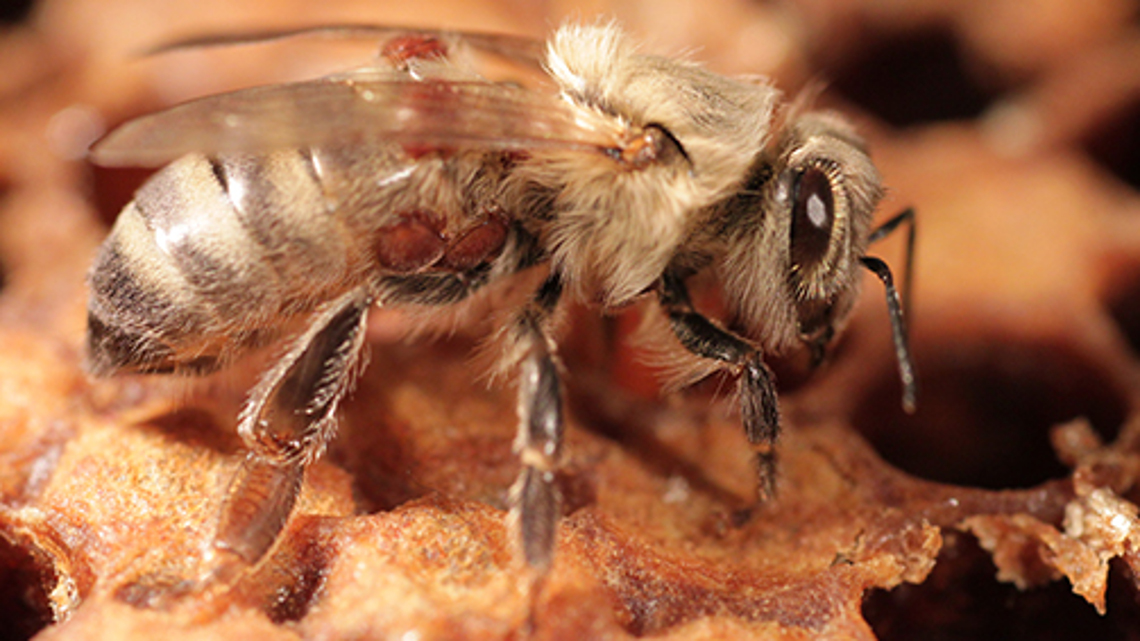Promising new weapon against bee parasite
Researchers at Hohenheim University found a possible new remedy against the Varroa mite: the chemical lithium chloride. It seems highly effective and is would be easy to dispense.

The wide-spread disappaerance of insects has many causes, including environmental toxins and climate change. But regarding the high bee mortality of the past years, there is another culprit: the Varroa mite. This parasite has infected almost all bee colonies. The mites suck at the larvae and bees and weaken them. In addition, the Varroa mite also transmits pathogens.
Researchers at the University of Hohenheim and the Martinsried-based company Sitools Biotech have now found a new potent biological anti-mite remedy: the chemical lithium chloride, which the researchers initially used as a solvent, kills the Mites effective. The researchers report on their discovery in the scientific journal "Scientific Reports".
New mechanism - zero side effects
The Varroa mite is one of the world's most dangerous bee pests. Beekeepers have had only few effective antidotes to choose from. Previously, infested beehives are either treated with aggressive organic acids such as formic acid or chemical miticides that cause residue and resistance problems. The new drug lithium chloride, however, has a completely different mechanism of action, is easy to use and, according to the researchers, there are no dangerous side effects for bees, beekeepers or consumers. "Lithium chloride can be used to feed bees in sugar water. In our experiments, even small amounts of saline solution were sufficient to kill the mites sitting on the bees within a few days - without side effects for the bees," explains Peter Rosenkranz, who heads the Landesanstalt für Bienenkunde in Hohenheim.
Easily available and harmless to health
Another advantage of the active ingredient is its availability: The global lithium supply is estimated at over 40 million tons. And lithium chloride salt is present in brines, salt lakes and healing springs in sometimes astonishingly high concentrations. Because of its safety, it has also been used in human medicine since the mid-20th century as an antidepressant.
Foreseeable industrial application
Before a final approval as a bee medicine, however, there are still some final tests neccessary. For instance, the best dosage must be determined and side effects for bees and users and the risk of residues have to be excluded completely. Some companies have already registered their interest and now want to clarify these issues together with the researchers.
jmr


